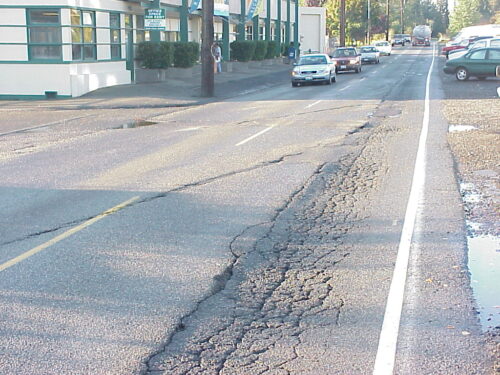COMMON TYPES OF ROAD FAILURES OF FLEXIBLE PAVEMENTS
Flexible pavements are constructed of multiple layers of materials that work together to provide a smooth and durable surface for vehicles to drive on. However, over time, these pavements can experience a range of failures that can affect their overall functionality and lifespan. Here are some common types of failures in flexible pavements:
1. Rutting: Rutting is a type of deformation in which the pavement surface develops channels or depressions due to the repeated passage of heavy vehicles. This can cause unevenness and discomfort to the drivers.
2. Cracking: Cracking is one of the most common types of pavement failure. It can occur due to a variety of reasons such as temperature fluctuations, heavy traffic loads, and improper drainage. Cracks can allow moisture and other harmful materials to penetrate into the pavement layers, leading to further damage.
3. Raveling: Raveling occurs when the pavement surface starts to disintegrate and break down into small fragments. This is usually caused by traffic wear, poor drainage, and excessive moisture infiltration.
4. Bleeding: Bleeding is a type of surface distress that occurs when the asphalt binder becomes too soft and starts to rise to the surface, resulting in a shiny or slick surface. This can lead to decreased skid resistance and increase the risk of accidents.
5. Stripping: Stripping is a type of failure in which the bond between the asphalt binder and the aggregate material is weakened, leading to the separation of the asphalt from the surface of the pavement. This can cause a rough surface, and if left unattended, can lead to further pavement deterioration.
6. Potholes: Potholes are a common type of pavement failure that occurs when the surface of the pavement breaks down, creating a hole. This can be caused by a combination of factors such as traffic loads, temperature fluctuations, and moisture infiltration.
7. Shoving: Shoving is a type of pavement failure that occurs when the pavement material is displaced and pushed forward, creating a series of ridges and bumps. This can be caused by a range of factors such as weak subgrade support, excessive moisture, and inadequate compaction.
Overall, regular maintenance and timely repairs are necessary to prevent and mitigate these types of failures in flexible pavements.
FOR MANY MORE UPDATES AVAILABLE CLICK BELOW
CLICK THE BELOW LINK TO READ THE COMPLETE CONTENTS
SOME CONTENTS OF THIS WEBSITE ARE FOR GOLD SUBSCRIBERS ONLY.
Join us as a GOLD SUBSCRIBER and get access to read important books.
KIND ATTENTION
We are going to close all what’s groups of CEV soon due to difficulties in posting information or message in more than 5 groups of CEV at a time.
All future posts of empanelment notices & professional importance will be shared on
1. https://t.me/+dbHNkNO22xsyYTY1
2. www.valuerworld.com
3. The Twitter handle of CEV India
https://twitter.com/cevindia?t=XbqlvnwUVz1G3uPgs749ww&s=09
after closing the groups.
All members of these groups are requested to register themselves at the following link immediately for Getting all related timely updates.


